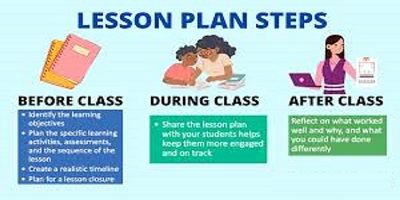important steps of the lesson plan
What are the important steps of the lesson plan? Creating an effective lesson plan is crucial for successful teaching and learning. While the specific steps may vary depending on the educational context and subject matter,. Here are some common and important steps to consider when developing a lesson plan:
Objective/Goal Setting:
Clearly define the learning objectives or goals for the lesson. What do you want students to know, understand, or be able to do by the end of the lesson?
Assessment of Prior Knowledge:
Determine what students already know about the topic. This helps in tailoring your lesson to their current level of understanding.
Introduction:
Begin the lesson with a hook or an engaging introduction to capture students’ attention and interest. Provide a brief overview of what will be covered.
Direct Instruction:
Present new information or skills in a clear and organized manner. Use a variety of instructional strategies to cater to different learning styles.
Modeling:
Demonstrate examples or model how to apply new concepts or skills. This helps students understand what is expected of them.
Guided Practice:
Allow students to practice new concepts or skills with guidance and support. Monitor their progress and provide feedback as needed.
Independent Practice:
Allow students to apply what they’ve learned on their own. This can be through assignments, activities, or projects.
Differentiation:
Consider the diverse needs and abilities of your students. Modify your teaching methods, materials, and assessments to accommodate different learning styles and abilities.
Closure:
Summarize the key points of the lesson and revisit the learning objectives. Provide closure to the lesson and connect it to the broader curriculum.
Assessment and Feedback:
Evaluate student understanding through formative or summative assessments. Provide constructive feedback to help students improve.
Reflection:
Reflect on the lesson afterward. Consider what worked well, what could be improved, and how you can adjust your teaching strategies for future lessons.
Materials and Resources:
List the materials, resources, and technology needed for the lesson. Ensure everything is prepared and accessible.
Timing:
Allocate appropriate time for each segment of the lesson to ensure a well-paced and organized flow.
Adaptation:
Be prepared to adapt your lesson based on student responses, questions, and unexpected events.
Last Words
Remember, flexibility is important, and the lesson plan should serve as a guide rather than a rigid script. Adjustments may be necessary based on the dynamics of the class and individual student needs.
